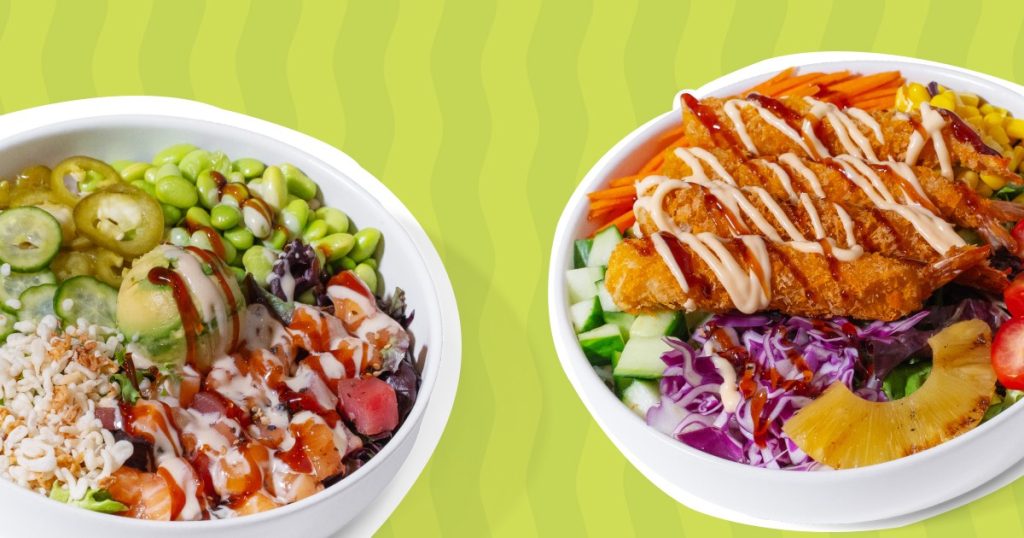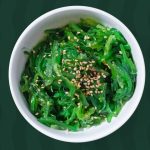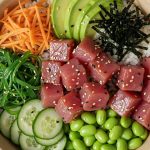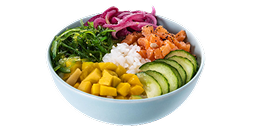Walk through any major metropolitan area, from the bustling streets of New York, the vibrant markets of Montreal, and the fashionable districts of London to the modern hubs of Tokyo, and you will inevitably find it: the poké bowl. What began as a simple, humble dish enjoyed by Hawaiian fishermen has exploded into a multi-billion-dollar, worldwide culinary phenomenon, staking its claim on virtually every corner of the global fast-casual scene.
But what exactly is this dish that has so captivated the modern appetite?
The name itself, poké, is simply the Hawaiian word for “to slice or cut.” For centuries, this was a simple, raw snack for island fishermen: cubes of reef fish, seasoned with nothing more than sea salt, seaweed, and crushed kukui nuts. It was humble, local, and perfectly fresh.
Today’s poké bowl is a masterful, globalized evolution. It is a vibrant, custom-built meal that blends island tradition with worldwide flavour. Its meteoric rise isn’t a random food fad; it is the inevitable result of a perfect storm that precisely targets the four core demands of the 21st-century diner: Health, Customization, Convenience, and Visual Appeal.
This is the story of how a classic island dish successfully jumped from the fisherman’s boat to become the world’s favourite fast-casual meal.
The Clean Eating Revolution
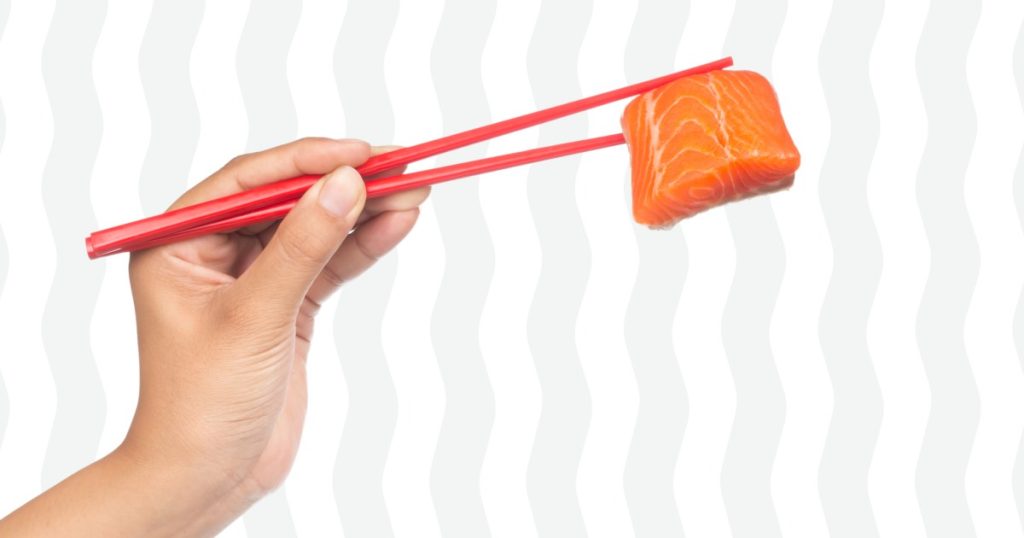
When asked to define healthy food, the top choices for Gen Z are items labeled as “all natural” (26%) and “fresh” (26%).
The modern diner demands transparency, fresh ingredients, and functional nutrition, and the poké bowl delivers on all counts. This is the single most powerful engine driving poké’s global success: it is perceived as the ultimate form of healthy fast food.
The Healthy Fast Food Appeal
The poké bowl successfully fills a massive void in the quick-service market. It provides a quick meal that is minimally processed, fresh, and guilt-free, a stark contrast to the heavy, fried, and complexly assembled offerings of traditional fast-casual chains.
Crucially, you can see every ingredient that goes into your bowl. This simple visual transparency fosters trust and makes the dining experience feel healthier. It satisfies the desire for a substantial, filling meal without the worry of hidden fats, sugars, or preservatives.
Nutritional Transparency
At its core, a traditional poké bowl is a nutritional champion. The star of the dish is high-quality, sashimi-grade fish like Ahi tuna or salmon. These proteins offer more than just a satisfying bite; they are densely packed with:
- Lean Protein: Essential for satiety, muscle maintenance, and keeping energy levels stable throughout the day.
- Essential Omega-3 Fatty Acids: These good fats are crucial for supporting heart health and brain function, making the meal not just filling, but functional.
Paired with a fiber-rich base like brown rice or greens and loaded with fresh vegetables, a poké bowl offers high satiety without the heavy, excess calories found in most other quick lunch options.
The Fast-Casual Imperative: Built for the Modern Pace
The appeal of the poké bowl is not just in its ingredients, but in how seamlessly it fits into the demanding rhythm of modern life. The rise of the fast-casual dining model, a hybrid that offers the speed of fast food but the quality of a sit-down restaurant, was driven by consumers who refuse to compromise quality for convenience. Poké is the perfect embodiment of this trend.
In today’s non-stop culture, meals are often defined by a specific need rather than a traditional dining time. Poké bowls resonate deeply with key consumer moments:
- The Post-Workout Meal: The customizable nature of the bowl makes it an ideal recovery meal. The combination of lean protein for muscle repair, complex carbohydrates for glycogen replenishment, and healthy Omega-3 fats ticks all the boxes for a high-performance, nutritious refueling.
- The Lunch Break Solution: For busy professionals, the poké bowl is an effortless answer to midday hunger. It is inherently easy to eat, quick to assemble, and provides sustained energy without the heavy, sluggish feeling associated with traditional fast-food options.
- Freshness on Demand: The core appeal of fresh, chilled ingredients is a strong differentiator in the crowded grab-and-go market. Consumers see the vibrant colors and fresh-cut ingredients, instantly associating the meal with health and vitality, a perfect, guilt-free snack for a mid-day craving.
Visual Appeal and Culinary Fusion: The Instagram Effect

The modern poké bowl is more than just a meal; it is a cultural phenomenon driven by aesthetic principles and smart culinary evolution. Its success is inseparable from the age of social media, where a dish must be as beautiful to photograph as it is delicious to eat.
The Photogenic Plate
The poké bowl is inherently “Instagrammable,” transforming customers into an army of free marketing agents. The visual impact is achieved through intentional design and vibrant contrasting colors:
- Vibrant Color Palette: The dish is a layered canvas of bright, contrasting colors, the deep red of ahi tuna or the orange of salmon, the creamy green of avocado, the white of rice, and the pink of pickled ginger. These natural, high-contrast layers are visually arresting and demand to be photographed.
- Structured Presentation: Unlike a tossed salad or soup, the stacked, deconstructed nature of the bowl, with a clear base, middle layer of protein/mix-ins, and a deliberate topping drizzle, provides a satisfying, architectural structure that is perfect for top-down social media shots.
- User-Generated Marketing: The visual appeal leads directly to high engagement on platforms like Instagram and TikTok. By creating a dish that is beautiful and easy to share, restaurants leverage the power of user-generated content, an invaluable form of organic marketing in the digital age.
Familiar Fusion: Blending Global Flavors
The widespread acceptance of the poké bowl stems from its successful culinary fusion, which took the original simple Hawaiian concept and made it accessible to the global palate.
- Hawaiian Core Meets Japanese Influence: The original Hawaiian dish, a simple fisherman’s snack of cubed fish, salt, and seaweed, was fundamentally changed by the introduction of Japanese immigrant culture. Key flavors like shoyu, sesame oil, rice vinegar, wasabi, and nori became staples, deepening the umami profile and enhancing the marination process.
The Deconstructed Sushi: Accessibility and Value
In the global market, the poké bowl is often positioned as a casual, accessible, and more affordable alternative to traditional Japanese sushi.
- The “Sushi in a Bowl” Concept: By offering sushi-grade raw fish served over rice, the poké bowl provides the key flavor elements of sushi without the formality, high price, or intricate preparation of rolls and nigiri.
- Low Barrier to Entry: The bowl format lowers the barrier to entry for raw fish consumption. The fish is often marinated in flavorful sauces, which can be more appealing to newcomers than the clean, simple taste of sashimi. Furthermore, the inclusion of cooked protein options (chicken, shrimp, tofu) allows non-raw-fish eaters to participate in the trend.
Conclusion
The poké bowl is far more than a passing food trend; it is a delicious reflection of how we live now. It successfully cracked the code for the modern diner, perfectly blending the speed and convenience demanded by our fast-paced lives with the health and wellness benefits we seek. By offering a clean, high-protein meal that is infinitely customizable, it empowers every individual to create a personalized, perfect dish.
It is not just food; it’s an experience, a balanced, vibrant, and personalized fuel source that keeps pace with your ambition.
Ready to taste the perfect balance of fresh flavor, healthy ingredients, and ultimate convenience? Try Olu Olu Poké Today!
